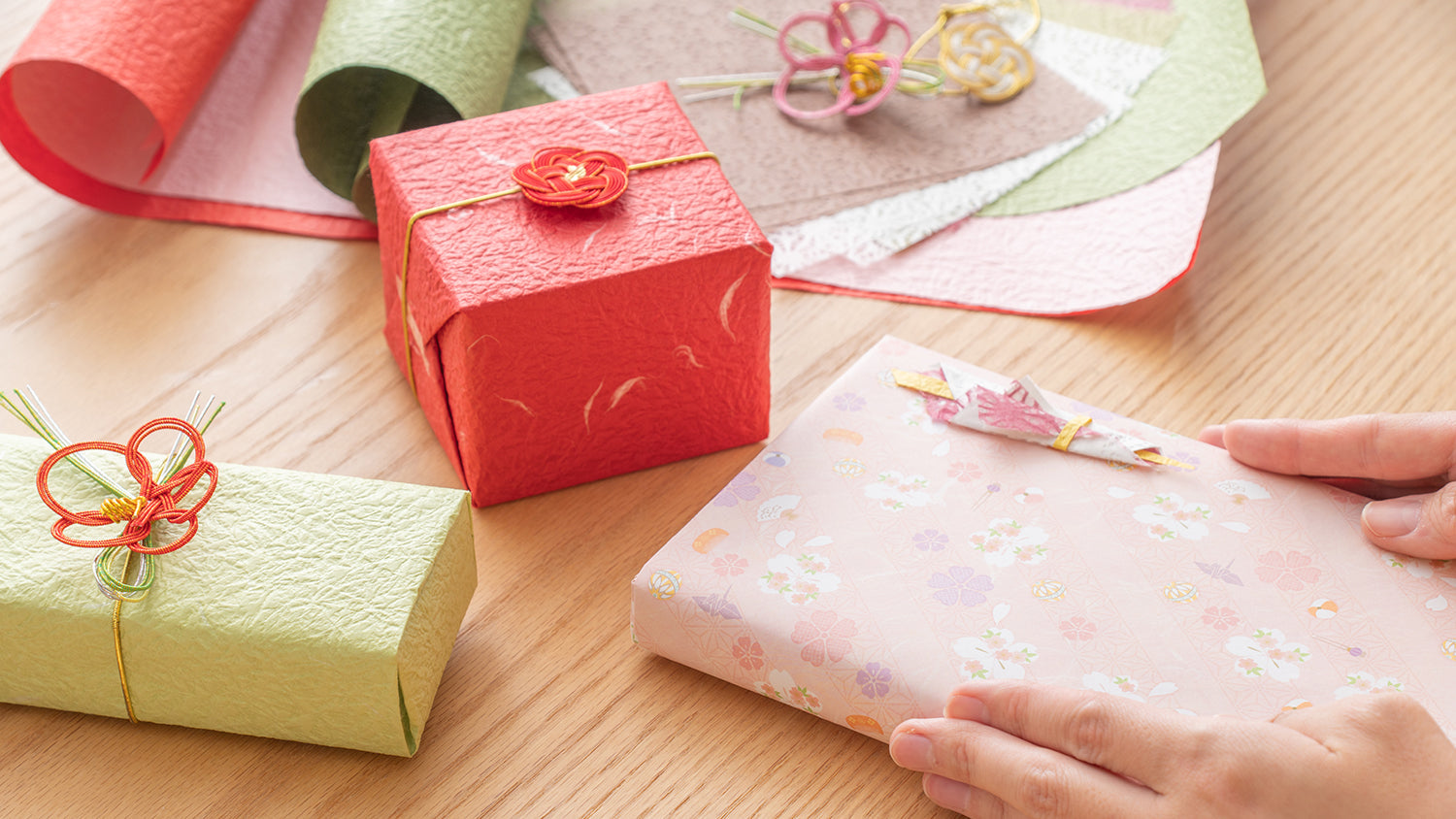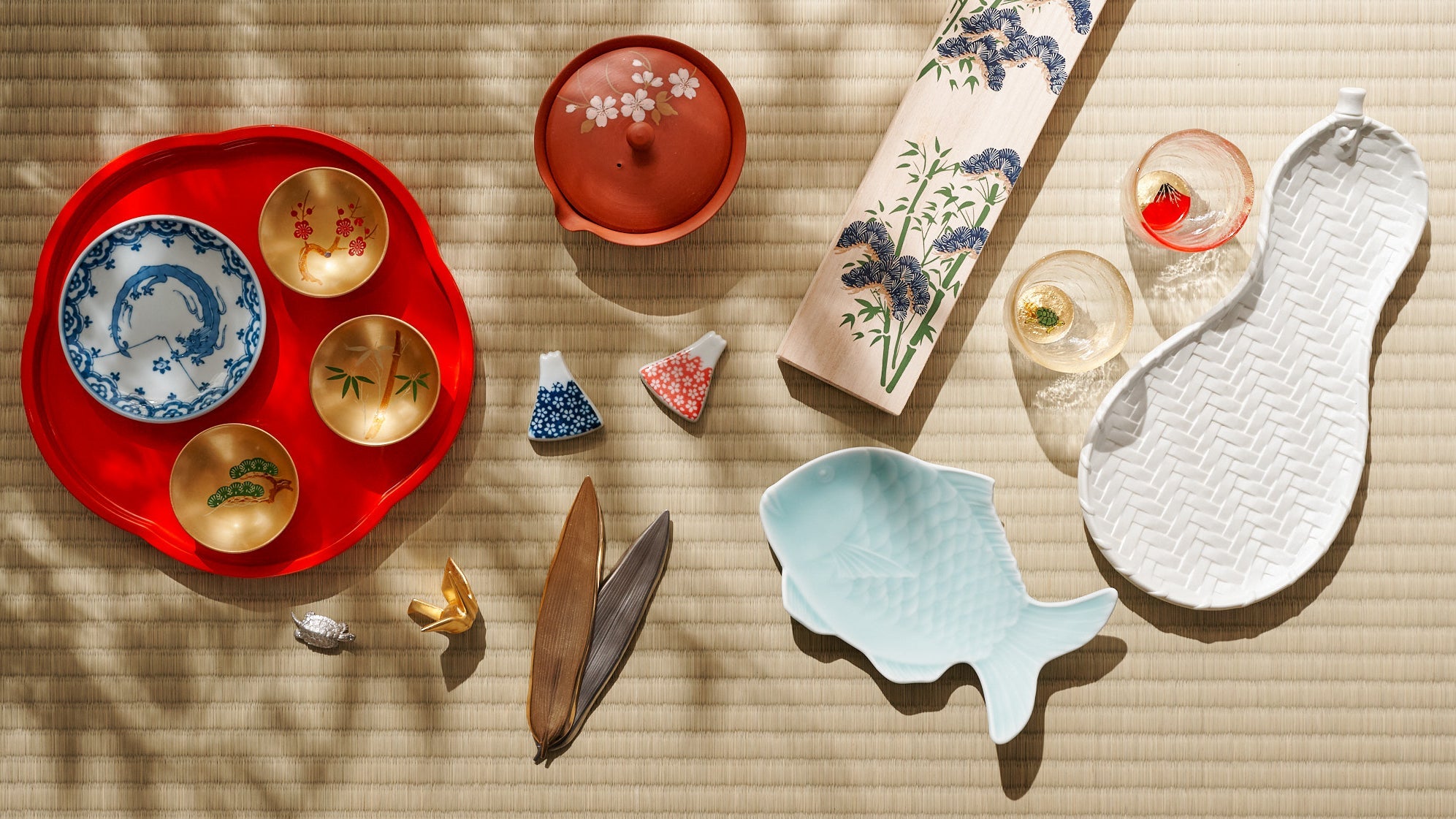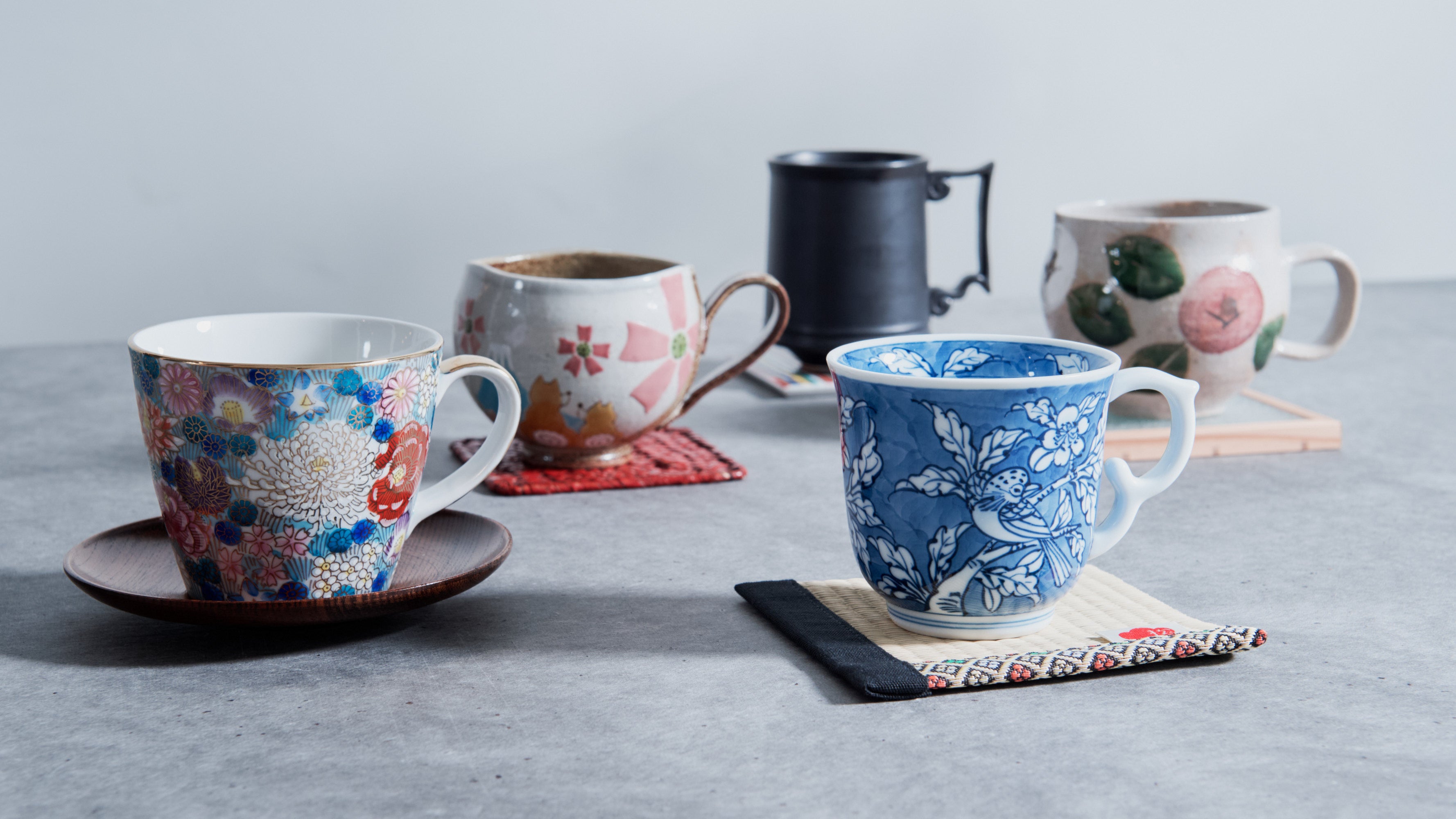
Guide to Japanese Sake Items
Written by Team MUSUBI
Sake—Japan’s time-honored rice-based drink—has long brought people together. The vessels used to serve it have shaped this culture just as much, appearing in every setting from weddings and New Year’s celebrations to casual gatherings with friends.
In this article, we’ll introduce the main types of sake ware, explain what makes each unique, and share a few etiquette tips to elevate your sake experience.
table of contents
Japanese Sake Cups
Sake cups are the most essential vessels in the world of Japanese sake. Their shapes vary widely, and each form influences the drinking experience in its own way. In this section, we’ll introduce the main types of sake cups, show how they are used in different settings—from formal ceremonies to everyday meals—and explain the varieties of sake that pair beautifully with them.
We’ll also explain how different materials suit various ways of enjoying sake, whether served warm, chilled, or sparkling.
Type of Japanese Sake Cups
Sakazuki
Flat and wide-mouthed, the sakazuki is the most classical form of sake vessel. Traditionally used in Shinto rituals, weddings, and other auspicious ceremonies, the cup holds only a small amount, meant to be finished in one or two sips. The shallow design allows the aroma to rise gently, making this style ideal for fragrant ginjo sake.
This Aizu-e patterned sakazuki set, adorned with elegant floral motifs, is perfect for special occasions. When sake is poured, the designs gleam softly, adding a luminous charm to the moment.
Ochoko
The ochoko is perhaps the most familiar sake cup today, often seen in izakaya and restaurants across Japan. Small and easy to hold, this cup is traditionally paired with a tokkuri sake carafe, allowing sake—especially warm varieties—to be served and shared gracefully.
Because of its compact size, the ochoko keeps sake at the right temperature and encourages frequent pouring, symbolizing hospitality and connection. Materials range from stoneware and porcelain to glass, offering countless ways to reflect personal taste and setting.
The Golden Hanazume Ochoko Sake Cup is decorated with an intricate hanazume floral design outlined in gold and finished with a single blue line inside. These cups bring elegance to any table, inviting you to admire their craftsmanship as much as the sake within.
Guinomi
Larger than an ochoko, the guinomi suits those who prefer to drink sake slowly and generously. Best used for chilled or room-temperature sake, this vessel’s ample size lets the aroma and texture unfold gradually. The thicker body also makes the guinomi a fine match for full-bodied nigori or junmai sake.
The warmth of the drink through the hand, ceramic and porcelain guinomi are especially popular. Handcrafted guinomi by artisans are cherished not only for everyday use but also as collectible pieces.
This rustic stoneware guinomi from Kousai Kiln features an earthy, textured clay body set with inlaid porcelain panels, hand-painted with a red hemp-leaf motif and a deep blue geometric design that create a bold visual contrast.
Sake Glass
Glass sake cups are perfect for chilled sake. Like wine glasses, they allow the drink to be swirled and admired, especially when enjoying delicate ginjo and daiginjo varieties. Their transparency also makes them ideal for sparkling sake, as well as for serving whiskey or wine.
The Tsubomi and Hana Tasty Sake Cup Set, crafted with Edo glass, enhances both the fragrance and flavor of sake. Elegant and versatile, they make an excellent gift for special occasions.
Type of Sake and Matching Sake Cup Materials
Stoneware
Stoneware cups have a subtle texture that softens the flavor of sake, giving it a rounder, mellower profile. Their thickness makes them pleasant to hold and sip from, and because they retain heat well, they are especially suited to warm or hot sake. They pair beautifully with junmai and nigori varieties known for their earthy depth.
Porcelain
Porcelain cups feature thin, smooth rims that offer a clean, crisp sip, perfect for aromatic and refined sake such as ginjo. Their graceful appearance complements both traditional and modern tablescapes. Porcelain performs well across temperatures, whether enjoyed chilled or gently warmed.
Lacquerware
Lacquerware cups offer a soft, gentle feel against the lips and subtly enhance the flavor of sake. Lightweight yet durable, they insulate well, making them suitable for both warm and cold sake. The deep luster of lacquer develops richness over time, lending these vessels a timeless elegance that suits celebratory occasions.
Glass
Glass is the best match for chilled or sparkling sake. The smooth, transparent surface highlights the color and clarity of the drink while allowing its pure aroma and flavor to unfold. Thin glasses accentuate the finesse of daiginjo, while thicker ones complement richer, unfiltered varieties. Modern sake glasses often resemble wine glasses, allowing the aroma and bubbles to be appreciated as you sip.
Metal
Metal cups, especially those made of tin, are also favored for chilled sake. Tin’s porous molecular structure is said to mellow sharper flavors and highlight sake’s natural sweetness. With excellent thermal conductivity, metal cups can warm sake quickly without dulling its aroma, though they also cool fast, so smaller vessels are ideal for savoring warm pours. Tinware adds a refined edge to fruity or aromatic kinds of sake.
For a deeper understanding of how to select the best-suited sake cup, see our related article, How to Choose the Perfect Sake Cup with Expert Tips.
Japanese Sake Carafes
A sake carafe is an elegant and practical vessel for serving and sharing sake. Whether you’re pouring warm or chilled sake, the simple act of using a carafe transforms an ordinary meal into something more refined.
Type of Japanese Sake Carafe
A sake carafe is an elegant and practical vessel for serving and sharing sake. Whether you’re pouring warm or chilled sake, the simple act of using a carafe transforms an ordinary meal into something more refined.
Tokkuri
The tokkuri is the most iconic sake carafe in Japan. Recognizable by its rounded body and slender neck, it fits comfortably in the hand and helps retain the sake’s aroma when poured. The name tokkuri is said to come from the gentle tokuri-tokuri sound—an onomatopoeia describing the gentle pour of sake.
Suitable for both warm and chilled sake, the tokkuri is particularly beloved for serving atsukan, heated sake. Most are made of stoneware or porcelain, materials that naturally enhance the sake’s smoothness while adding a touch of warmth to the dining experience. Its graceful silhouette makes it as pleasing to look at as it is to use.
This Hasami ware tokkuri features the traditional tokusa stripe pattern, giving it an authentic, timeless presence. It’s perfect for enjoying hot sake in a setting that feels both classic and serene.
Katakuchi
The katakuchi—literally “one mouth”—is a bowl-shaped carafe with a single spout on one side, resembling a bird’s beak. Its open design allows the sake to breathe, releasing delicate aromas and softening the flavor. This makes it especially suitable for chilled or ginjo sake, where fragrance and nuance matter most.
Because the aroma develops as the temperature rises, letting the sake rest briefly in a katakuchi before pouring can bring out even more depth and complexity.
This exquisite katakuchi from Tosen Kiln features a hand-painted design of Kyoto’s iconic Gion weeping cherry blossoms. The gentle color palette and wooden handle evoke the fleeting beauty of spring in Kyoto, a piece that embodies both craftsmanship and poetic charm.
Chirori
The chirori is a traditional metal carafe, most often made of copper or tin, designed specifically for warming sake. Its high thermal conductivity allows precise temperature control, letting you heat sake evenly and quickly without losing its delicate aroma.
Refined in appearance, the chirori is a fixture in high-end Japanese restaurants and traditional inns. Among them, tin chirori are particularly prized: they are believed to mellow harsh notes, enhance aroma, and bring out sake’s sweetness, making them a favorite among connoisseurs.
This tin chirori from Seigado is a true work of craftsmanship. Each piece is shaped by hand, the metal hammered tens of thousands of times to achieve a smooth, lustrous finish. Built to last a lifetime, it is a masterpiece that unites tradition, function, and beauty.
Japanese Sake Warmers & Coolers
Japanese Sake Warmer
One of the true pleasures of kanzake, warm sake, lies in how its aroma and flavor evolve with temperature. A slight change in warmth can transform a sake’s character, revealing hidden layers of sweetness, umami, or fragrance. To enjoy these subtleties, a sake warmer is an indispensable item.
Compact and refined, a sake warmer is a small tabletop pot designed to gently warm sake while preserving its delicate balance. Simply fill it with hot water, place a tokkuri or chirori inside, and let it sit for a few minutes. Because it warms the sake indirectly, the drink never overheats, allowing its aroma and flavor to shine through.
Both functional and decorative, a sake warmer fits beautifully in a home dining or bar setting. They are available in various materials such as ceramic, porcelain, and copper, each offering a distinct aesthetic and heat-retention quality.
Most are made to hold a single serving carafe—about 180 ml (6 fl oz)—making them ideal for shared meals or relaxed evenings at home.
Japanese Sake Cooler
For chilled sake lovers, the sake cooler is the perfect companion. It keeps reishu, cold sake, at just the right temperature, letting you savor its crisp, refreshing flavor for longer. Most coolers are designed to hold a tokkuri or katakuchi surrounded by ice, and some feature a double-wall structure that chills the sake without direct contact with the ice, preserving its pure taste.
Cold sake pairs beautifully with summer meals and is especially suited to aromatic varieties like ginjo and daiginjo. Using a cooler prevents temperature fluctuations, helping preserve the drink’s brightness and fragrance throughout your meal.
Many sake coolers are crafted with refined, contemporary designs that elevate the entire dining presentation. Most are made to hold a single serving carafe of about 180 ml (6 fl oz), making them ideal for shared meals or relaxed evenings at home.
Most hold a standard 720 ml (24 fl oz) sake bottle or a 750 ml (25 fl oz) wine bottle, making them as versatile as they are beautiful.
Tips to Enhance Your Sake Experience
How to Pour Sake
When pouring sake, etiquette is as important as precision. The proper way is to hold the tokkuri with both hands, your dominant hand gripping the body and your other hand gently supporting it near the spout. The back of your dominant hand should face upward, with the other lightly steadying the tokkuri from the side. Avoid holding it from below, known as the “reverse grip,” as this is considered impolite in formal settings.
As you pour, keep the spout from touching the cup and fill it to about three-quarters full. A graceful pour has a rhythm: begin gently, pour a little more steadily, and end with a light finish. A small twist of the wrist prevents drips and shows refinement.
A considerate host notices when a companion’s cup is nearly empty and refills it before it’s dry. Pouring for yourself is generally avoided in formal situations, but among close friends, it is perfectly acceptable. The essence of Japanese sake etiquette lies in omotenashi, the spirit of hospitality expressed through the simple act of pouring for one another.
How to Receive Sake
When receiving a cup of sake, use both hands. Hold the cup with your dominant hand and place the other beneath it for support. This simple gesture conveys respect and creates a graceful appearance. As someone pours for you, a slight bow and a quiet “thank you” complete the exchange with elegance.
When drinking, lift the cup slightly toward your face and sip quietly. For larger vessels such as the guinomi, hold it gently with one hand while supporting it underneath with the other, creating a natural and composed posture.
Interestingly, during the era of the samurai, it was customary to hold the sake cup with the non-dominant hand, allowing quick access to one’s sword in case of an emergency.
In Japan’s samurai era, it was customary to hold the cup with the non-dominant hand, leaving the dominant hand free to draw a sword if needed.
The act of drinking sake is more than a simple indulgence; it is a quiet ritual that refreshes the mind and strengthens the bonds between people. In the shapes and textures of sake ware, and in the way one pours and receives, lives a refined spirit of beauty and hospitality passed down through generations in Japan.
When you hold your favorite cup, its weight, texture, and the feel of it against your lips subtly influence the flavor of the sake itself. Within the gentle rhythm of pouring, taking in the aroma, and sipping slowly lies the true essence of sake—an art of mindfulness and appreciation. Find the vessel that resonates with you, and let every pour become a moment to be savored.






























Leave a comment
This site is protected by hCaptcha and the hCaptcha Privacy Policy and Terms of Service apply.